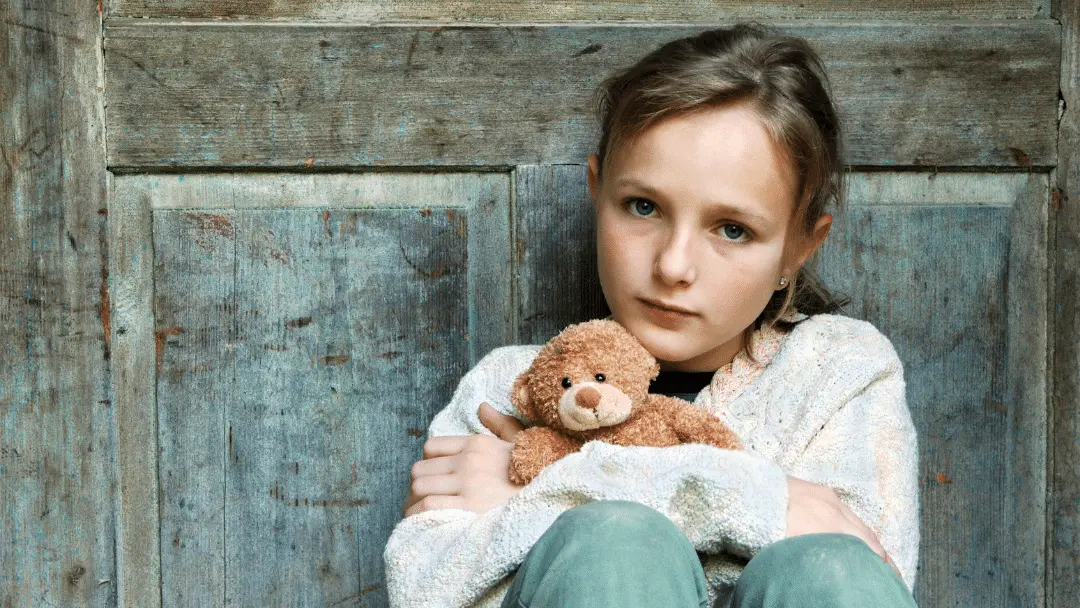No, this is not just another name or version of post-traumatic stress disorder. Once you read this article, you may not only finally understand why you struggle the way you do but also, and more importantly, walk away with the hope that life can be much different moving forward.
What Are the Possible Signs and Symptoms of CPTSD?
Does this describe you or someone you know?
- Living with a constant feeling of emptiness or hopelessness
- Difficulty managing emotions—like quickly getting angry or shutting down
- Difficulty trusting people
- A history of unstable or unhealthy relationships
- Avoiding intimate relationships, whether friendship or romantic
- Wondering if you’re/they’re bipolar with shifting intense emotions
- Living with a deep sense of shame or worthlessness
These symptoms suggest that you or the person you know may suffer from CPTSD.
How is CPTSD different than PTSD?
Most significantly, a single event causes PTSD. PTSD can happen at any time in life. But on the other hand, CPTSD results from repeated traumas that occur for months or years.
How is CPTSD the same as PTSD?
The symptoms of both do involve re-experiencing the trauma:
- Hyper-arousal
- Getting triggered
- Avoidance
However, what is unique to CPTSD are the signs and symptoms listed earlier.
What causes CPTSD?
As mentioned above, CPTSD results from complex life experiences that are chronic and usually from your childhood. Typically, it involves patterns of:
- Physical, mental, or emotional abuse
OR, not so obviously,
- Neglect or abandonment
Witnessing ongoing abuse, even if not directed at you, can also create CPTSD symptoms.
Why do people develop CPTSD?
You may develop CPSTD because your childhood experiences, doled out by your parents or caregivers, taught you that your feelings or thoughts don’t matter. You were made to feel you were nothing, a nobody, and unlovable.
These were the adults that you were supposed to be able to trust—the very people who were supposed to love and respect you and have your best interests in mind.
What do people with CPTSD commonly feel and believe?
Many clients who are suffering from CPTSD echo these heartbreaking words:
“I don’t matter.”
Just as sad, they were not allowed to express their emotions because it was not “safe.”
Imagine as a child having to shove down and repress all the many hurts, anger, sadness, and other intense emotions—feelings triggered by being ignored or abused. You may have been told in words or actions (or both!) that how you feel is irrelevant.
All the while, you believe this is “normal” and just “how it is.” In other words, you think this is THE truth!
You then grew into adulthood feeling:
- Empty
- Broken
- Not trusting
- Not feeling loveable
- Feeling Unworthy
As a result, you can see why you would have difficulty trusting anyone or letting anyone get close.
Getting close would equal getting hurt. And, since you didn’t learn how to express your emotions, you then have difficulty regulating your tumultuous inner world. Hence, the key signs and symptoms of CPTSD.
Can CPTSD lead to other mental health diagnoses?
Absolutely!
The obvious ones would be anxiety and depression. Not so obvious, however, may be symptoms that meet the criteria for ADD/ADHD, bipolar, or borderline personality disorder.
Why do coping strategies become other mental health concerns?
Here’s how coping strategies can turn into a mental health concern.
A beautiful part of humans is that we’re all hard-wired to survive. As a result, we consciously, but mostly subconsciously, develop impressive and highly effective strategies to help us get through life.
What are some of these coping strategies?
Survival means being able to react to situations when our safety is at risk and feelings of fear arise. Commonly known are the three F’s: Fight, flight, or freeze.
Flight
First, let’s discuss the flight strategy because this is the one that can look like or lead to another mental health diagnosis.
Flight means to get the heck away to find safety. However, that doesn’t always mean physically fleeing. Think, for example, of a child who couldn’t escape, yell, or cry for fear of more punishment.
That child could develop ADD (escaping the present moment by daydreaming about other places, things, etc.), or you could disassociate (mania in bipolar). Even mood swings caused by the difficulty of regulating emotions could look like bipolar. And lastly, because of your inability to trust people and regulate emotions, unstable relationships could mimic borderline personality disorder.
Fight
“Fight” brings out the obvious—aggressive behaviors. This strategy is quite simple. For your survival and safety (emotional and physical), you have to “put down” or control the situation.
Freeze
As to the last F, if you ever wonder why you shut down in times of conflict, you may display the “freeze” strategy. Holding in intense emotions over time can eventually lead to depression and anxiety, an inner world filled with trauma-bound feelings.
Another “F” Strategy: Fawn
There is one other “F” known as Fawn. This behavior is also known as co-dependency. If you “fawn” over someone, you’re less likely to create conflict (thereby avoiding pain and rejection).
Additionally, the other huge payoff is being liked/accepted. Fawning enough will, in turn, cause you to self-sacrifice leading to more sadness, depression, and resentment. Not to mention the anxiety of wondering if the fawning is enough for people to like you.
How can a person with CPTSD end suffering and experience joy?
Today can be the beginning of the end of your suffering. Today, you can begin to release yourself from the life-long symptoms that have prevented you from enjoying and embracing life.
So much joy is available to you! Our clients have found it, and our therapists have found it.
Thank your coping strategies for helping you survive the world to get to where you’re today.
But now, it’s time to thrive, not just survive. It’s time to know you matter and you’re loveable!
It will take your commitment to dive into your history to free yourself from the chains of your past.
Standard cognitive behavioral therapy or medication alone will not cut it.
Working with a skilled therapist who can safely guide you in removing your layers of scars, protections, and wounds is your way out. AND the only way out.
Better yet, collaborating with a therapist who taps into your body’s energy in addition to psychotherapy will move you along most effectively. After all, accumulated trauma is still residing within your body.
When you’re ready to begin your healing and truly live life to its fullest, we are here to guide and support you every step of the way.
Bessel van der Kolk. (2015). The body keeps score: Brain, mind, and body in the healing of trauma. Penguin Publishing Group.
Walker, P. (2013). Complex PTSD: From surviving to thriving: A guide and map for recovering from childhood trauma (1st ed edition). CreateSpace Independent Publishing Platform.
Lisa Aranas


